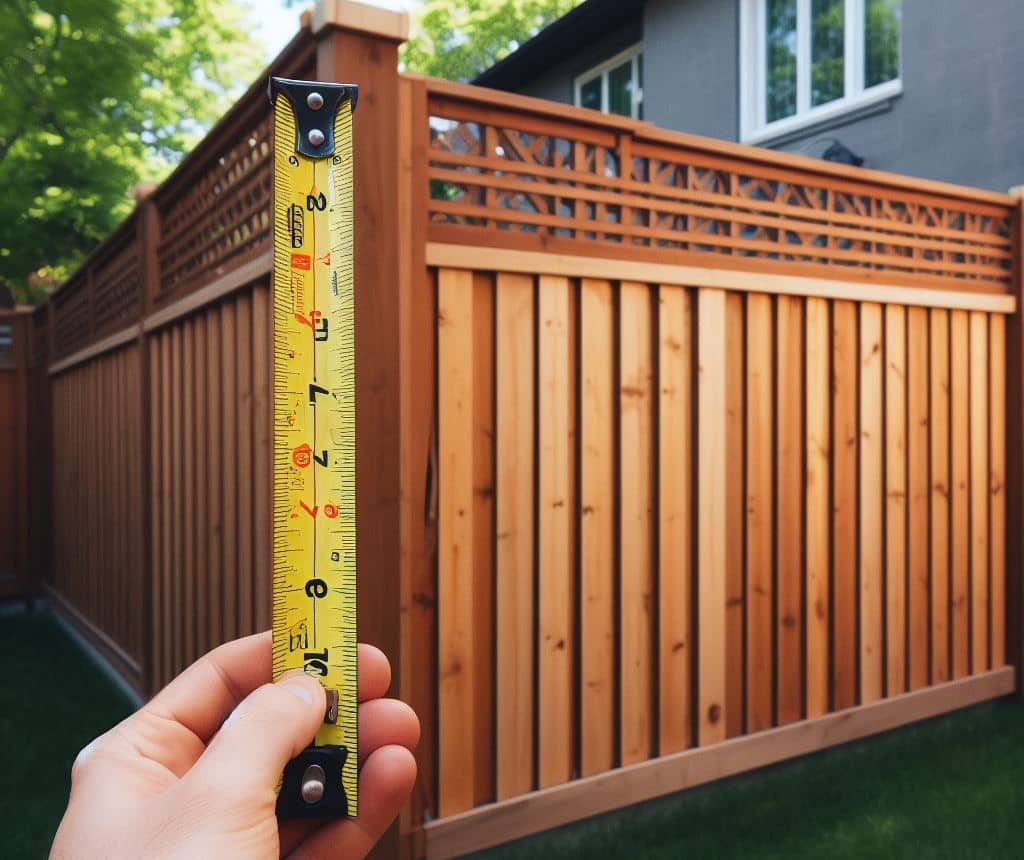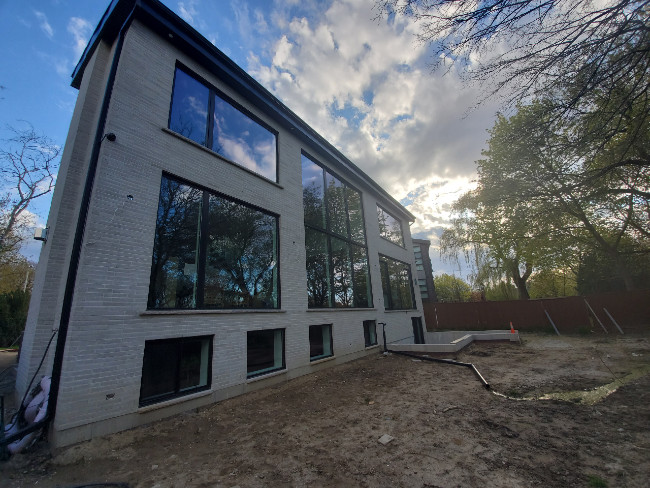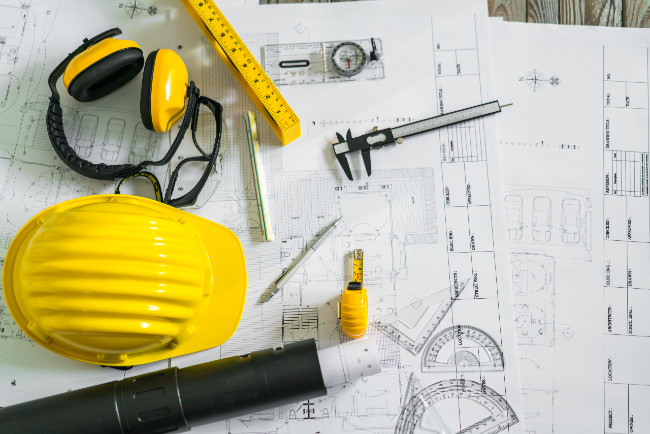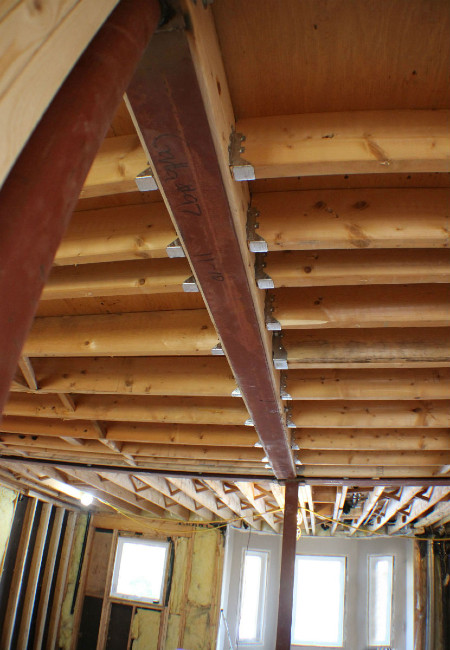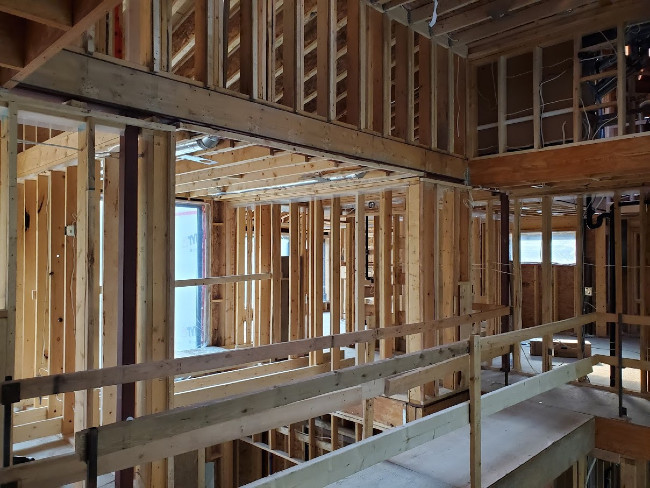For Toronto homeowners, installing a fence around their property in accordance with specific fence height regulations is essential. This ensures that your fence complies with municipal bylaws and contributes to neighborhood harmony.
This comprehensive guide covers everything Toronto homeowners need to know about fence height regulations in the city. We’ll outline the key limits for different fence locations, how to measure height properly, options for increasing privacy without exceeding regulations, when height exemptions may be allowed, and factors to consider when selecting the ideal fence height for your unique property. Adhering to Toronto’s fence height regulations promotes safety and avoids any issues down the line.
Overview of Fence Height Limits in Toronto
The maximum allowed fence height in Toronto depends on where on your property the fence will be located:
Front Yard Fence Height
Fences in the front yard can be up to 4 feet high from adjacent grades. This lower height limit maintains visibility and an open aesthetic from the street. Front yard fences over 4 feet high require a permit and are rarely allowed.
Side and Rear Yard Fence Heights
Fences along the sides and backs of properties can be up to 6 feet high from adjacent grades. The increased height provides more privacy in these areas. Side and rear yard fences over 6 feet high require a permit and are seldom approved.
Corner Lot Side Yard Fence Heights
On corner lots, the side yard that faces the street has a 4-foot height limit like the front yard. This allows for adequate visibility at the intersection. The interior side and rear yards on corner lots can still have 6-foot high fences. These standard height limits apply to fences around residential properties in Toronto. Different maximum heights are specified for commercial, industrial, and institutional sites under municipal zoning bylaws.
These standard height limits apply to fences around residential properties in Toronto. Different maximum heights are specified for commercial, industrial, and institutional sites under municipal zoning bylaws.
In general, front yards and side yards facing a street have lower 4 foot high fences, while side and rear yards can have taller 6 foot fences. But even within those parameters, the allowable height at any given point along the fence depends on proper measurement and following construction standards.
How to Correctly Measure Fence Height in Toronto
When determining the permissible fence height at any point, the height must be measured from the lowest adjacent grade. This means:
- On flat lots, measure from the ground level on the lower side of the fence.
- On sloped or tiered lots, measure from the lowest ground level near that section of fence.
The allowed height may vary at different points along the fence depending on the terrain and elevation changes. Even on flat lots, pooling of rain water or debris against the fence can affect the permissible height.
To determine the maximum legal height for the entire fence given the lot’s unique grading, it is advisable to have professionals:
- Review the existing elevations and grade changes along the proposed fence line.
- Survey and measure from the lowest points near each fence section.
- Mark the determined height limit with stakes for compliance during construction.
On tiered or sloped lots, the grade adjacent to the fence can also be raised using retaining walls or berms to allow for taller fence heights. However, the City of Toronto specifies construction requirements for any retaining walls used to raise grades for this purpose.
Caution should be exercised when constructing fences right up to the maximum heights, as even a slight deviation could put the fence over the legal limit. Leaving a buffer of 6 inches or more below the maximum height is recommended.
Learn more about the importance of proper fence height measurement and its impact on your fence’s compliance with Toronto regulations by visiting Toronto’s Zoning Bylaws.
Strategies for Added Privacy Without Exceeding Height Limits


Homeowners who feel a 4 or 6 foot high fence does not provide adequate privacy have several good options to increase seclusion and screening without violating Toronto’s fence height regulations:
Use Solid, Opaque Fencing Materials
The more solid and opaque the fencing material is, the more privacy it will provide even at lower heights allowed in front yards:
- Solid wood fences provide more privacy than spaced picket fences.
- Metal or vinyl fences can be installed with solid panels vs. chain link mesh.
- Layering overlapping panels creates a more opaque barrier.
Plant Foliage on or Around the Fence
Strategically planting foliage can screen views without increasing fence height:
- Vines grown on trellises against the fence block lines of sight.
- Hedges, trees or shrubs along the fence mask views beyond.
- Planting beds installed right against shorter fences limit visibility.
Proper plant selection and maintenance is needed for optimal screening effects.
Raise the Grade Around the Fence with Berms and Retaining Walls
Berms or retaining walls around the fence essentially elevate the grade to allow taller fence installation:
- earthen berms around the perimeter increase privacy.
- short retaining walls can raise the grade by 1-2 feet.
- stepped or terraced retaining walls work for steep slopes.
This strategy is often used to transform a 4-foot front yard fence into a 6-foot fence or more. However, Toronto has requirements on retaining wall construction, so permits and approvals may be needed. Professional support is also advised.
By using solid materials, strategic landscaping or grading changes, homeowners can transform even lower height front yard or side fences into a heavily shrouded private sanctuary. Privacy goals can be met without violating height limits or seeking exemptions.
Exceptions Where Fence Height Limit Exemptions Are Allowed


While the standard front, side and rear yard fence height limits apply to most residential scenarios, the City of Toronto does make exceptions in certain cases where height exemptions can be granted:
Pool Enclosure Fencing
Due to safety considerations, fences surrounding swimming pools can be exempted from standard height regulations:
- Pool enclosure fences can be up to 8 feet high if required for compliance with pool safety codes.
- Increased height with self-closing and self-latching gates prevents unauthorized pool access.
Commercial, Industrial and Institutional Sites
Non-residential properties zoned for commercial, industrial or institutional use are subject to different fence height limits under municipal zoning bylaws and may apply for exemptions if required for safety or security.
Privacy Concerns
In rare cases, especially severe privacy issues between closely situated houses may warrant an exemption for a taller fence if existing regulations are deemed inadequate – for example, if second story windows have direct sightlines to a neighbor’s patio or pool.
Where exemptions are desired, the property owner can apply for a minor variance with the City of Toronto Committee of Adjustment. Justifying the need for increased height due to unique property circumstances or to meet established codes for specialty uses like pool enclosures will strengthen the variance application.
If granted, the minor variance will specify the maximum height the fence can be built to at that location. Careful compliance with variance conditions is crucial to avoid violating municipal bylaws. Professional assistance in preparing and filing the minor variance application is recommended.
Key Factors to Consider When Choosing Fence Height
Homeowners will need to weigh several considerations when deciding the most suitable fence height for their specific property. While compliance with municipal limits is first priority, within allowed dimensions optimal fence height depends on:
Intended Purpose of the Fence
The fence height should align with the intended purpose:
- Forward privacy screening requires taller rear yard fences.
- Perimeter security benefits from consistently higher side and rear yard fencing.
- Lower front yard fences maintain an inviting curb appeal.
Fence Location on the Property
Location factors into permitted heights and privacy needs:
- Front yards warrant moderate height for street appeal.
- Side and rear areas allow taller heights for seclusion.
- High-traffic areas may need lower heights for safety.
Lot Shape and Layout
The property layout influences height requirements in different zones:
- Wider lots need taller rear yard fences for enclosing spacious areas.
- On long narrow lots, 6-foot side fences are better for enclosing the length.
- Corner lots require lower side yard fence heights for visibility at intersections.
Landscaping and Grade
Existing landscaping and grading affects height regulations:
- Steep grades may warrant taller fences for consistency of height along slope.
- Strategic plantings can boost privacy without taller fencing.
- Retaining walls can allow the maximum height to be increased.
Architectural Character and Style
Fence height also impacts aesthetics:
- Fence height should complement the house style and design.
- Consistent heights unite multi-sided fencing in cohesive visual appeal.
- Gradual transitions between front and back heights look more natural.
Due to these diverse factors, the ideal fence height is unique for every home and yard. Homeowners must weigh all considerations together when planning their fence installation.
Why Following Toronto’s Fence Code Matters


It may be tempting to exceed municipal fence height limits to gain more privacy or enclosure, but violating the established regulations has consequences:
Avoid Disputes with Neighbors and the City
Excessively tall fences often spur neighbor complaints and could lead to orders from the city to shorten the fence if confirmed to breach bylaws. Avoid this headache by adhering to regulations proactively.
Prevent Safety Hazards
Height limits factor in maintaining visibility for traffic safety and crime deterrence. Exceeding them can create blind corners, obscured intersections and hidden spots that put public and property safety at risk.
Maintain Visual Community Harmony
Consistent fence heights foster a cohesive look along the streetscape. Tall fences that exceed norms and limits disrupt visual continuity and community character.
By complying with the city’s fence code, homeowners show respect for municipal guidelines, consideration for their neighbors, and commitment to the betterment of the community aesthetics and security. Fortifying privacy can be achieved within the regulations.
Concluding Summary
This comprehensive guide covered key regulations and insights to ensure your new fence complies with Toronto’s municipal fence height limits:
- Front yard fences can be 4 feet high maximum.
- Side and rear yard fences can be 6 feet high maximum.
- Height is measured from the lowest adjacent grade.
- Strategic landscaping and materials can increase privacy without exceeding height limits.
- Pool enclosures and non-residential sites may qualify for height limit exemptions if required.
- Match fence height to your property’s unique layout and needs while respecting municipal code.
Check with the City of Toronto Fence Bylaw for the most up to date specifications and requirements. Constructing your fence fully within the regulations avoids headaches and contributes to community safety and aesthetics while still meeting your property’s needs. With a thoughtful design and strategic privacy elements, even a shorter code-compliant fence can provide the seclusion and enclosure you seek.
FAQs
How high can fences be in Toronto?
In Toronto, front yard fences can be up to 4 feet high and side and rear yard fences can be up to 6 feet high. The height is measured from the lowest adjacent grade.
How high can a fence be in Ontario?
Fence height regulations can vary by municipality across Ontario. In Toronto specifically, the maximum heights are 4 feet in front yards and 6 feet in side/rear yards. Other cities like Mississauga may have different limits.
Do I need a permit to build a fence in Toronto?
Typically no permit is needed to construct a fence 4 feet or shorter. For taller fences up to the maximum height, you can build without a permit as long as they meet code specifications. Exceeding maximum heights requires a permit.
How high can I build a fence around my property?
The maximum height for a full perimeter fence around a property would be 4 feet high along the front yard and 6 feet on the side and rear yards in order to comply with Toronto’s fence regulations.
Can I put up an 8ft fence?
Generally not. Eight foot high fences exceed the standard height limits in Toronto, so a permit would be required by applying for a minor variance with the city. These are rarely approved.
Is an 8 foot fence too high?
In most residential areas of Toronto, yes – eight feet would be considered too high and violate city fence codes for standard residential properties. Exceptions may be made for safety reasons, like enclosing a pool.
How high can fences be between neighbors in Toronto?
If building on the property line between two neighbors in Toronto, the fence height would need to follow standard regulations – 4 feet in front yards and 6 feet in side/rear yards.
How tall can I make a privacy fence?
For optimal privacy while respecting fence regulations in Toronto, rear and side yard fences can be up to 6 feet tall, along with added screening like landscaping. Front yard privacy fences are limited to 4 feet tall.
Does my neighbor have to pay for half the fence in Ontario?
In most cases, yes – Ontario’s Line Fences Act requires adjoining property owners to share the cost of a dividing fence. Discuss costs with neighbors first before building.
How do I complain about my neighbor’s fence in Toronto?
Reach out to them first explaining your concerns politely. If that fails, contact the City of Toronto’s Municipal Licensing and Standards department to file a complaint about a problematic fence.
What is the Line Fences Act in Ontario?
This provincial law sets out the rights and responsibilities of property owners when building boundary line fences, including sharing costs. Neighbors must be notified prior to fence construction.
Can I put a fence up next to my neighbor’s existing fence?
In most cases, no. Installing a second fence right beside an existing fence will exceed municipal height limits. Consider removing the existing fence and building one shared fence.
How tall can a fence be in Mississauga?
Fence height regulations can vary across Ontario cities. In Mississauga, fences up to 2.5m (approx. 8ft) are allowed inside and rear yards, different from Toronto’s 6ft limit. Check your local bylaws.
How close to my neighbor’s property line can I build?
Typically fences can legally be built right up to the property line. But it’s smart to allow 6 inches as a buffer when building near lot lines to prevent any boundary issues.

